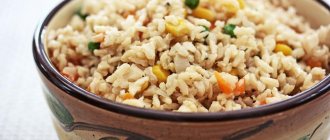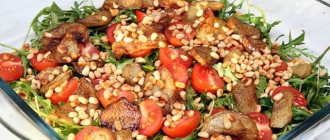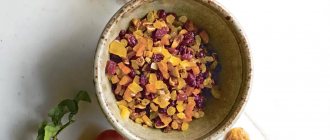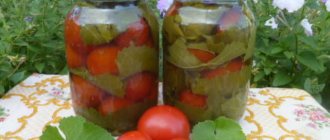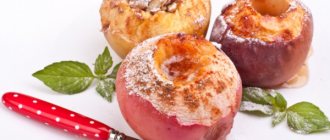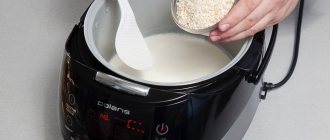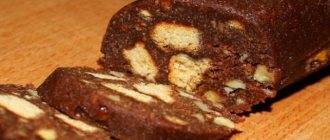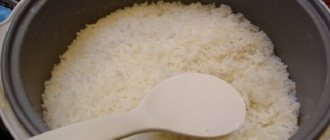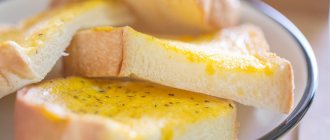At Christmas, as well as at funerals, they prepare kutya (sochivo, kolivo), only they differ slightly in the composition of the products. For Christmas, kutya is often prepared from wheat with honey, poppy seeds and nuts, and for funerals - from rice with raisins, often adding nuts, candied fruits, various dried fruits, honey, and so on. So, today we have funeral kutia from rice with raisins: a recipe with a photo, then we will look at several options for preparing kuti for a funeral (koliva), and recipes for making cereals, in particular millet (for Christmas). All recipes are very tasty, choose what you like. From rice, kutia is softer and more tender, it is more suitable for children and old people, but from wheat it needs to be well boiled, it is somewhat heavy for a delicate stomach, but very tasty and satisfying.
It has long been customary, when a loved one dies, to arrange a wake after the funeral, after 9 days, and also after 40 days. The first dish of the funeral table is kolivo or kutya made from rice with various additives. It is placed on the table first, and it is also tasted first. Well-cooked kutia is tasty, tender, aromatic and juicy, depending on how you cook it and what products you add to it.
Funeral Orthodox kutia made from rice with raisins
- Take round rice , wash off the white coating with cold water, the water should become clear.
- Pour water into a container, its volume should be twice the volume of rice. Add a little salt.
- Rinse the raisins , remove any debris and stems, then pour boiling water over them.
Raisins for kutya must be seedless!
- Throw the rice into boiling water and cook for 20-25 minutes over low heat.
But it would be better to immediately cover the pan with a lid and put it in the oven at 180 degrees. So the taste of kutya will be as if it came from the oven. Clay pots can be used for this purpose.
- Pour a little vegetable oil into a heated frying pan, and then put a piece of butter. The first oil will help preserve the flavor of the second, but will prevent it from burning.
- In the meantime, the raisins should steam thoroughly, drain the water from them and add them to the frying pan with the oils. Simmer it for about five minutes, stirring occasionally.
- Next, prepare the syrup: dilute sugar in a small amount of water, then pour raisins with this sweet water. Do not put out the fire for another two minutes.
- When the rice is cooked, mix it with raisins.
- Here is the simplest recipe for funeral kutia with a minimum amount of ingredients.
Simple rice kutia with honey, nuts and raisins
This dish is ideal for commemoration on 9 and 40 days. The treat is not rich, i.e. modest in taste and non-festive in appearance, which is what funeral traditions require. Our kutya will consist of a minimum of ingredients: rice, honey, walnuts and raisins.
But if you decide to turn the mourning kutia into a festive one, then simply add more bright and sweet ingredients to it. For Christmas kutia, you can use a whole assortment of dried fruits, candied fruits, sweets, jam and other sweet additives.
Ingredients
- Rice - 1 cup;
- Walnuts - ½ cup;
- Honey - to taste;
- Water - 2 cups;
- Raisins - ½-1 cup.
Cooking kutya from rice cereal with raisins, honey and nuts for a funeral
First, let's cook the rice we've chosen.
- To do this, pour water into the pan (there should be 2 times more water than the rice itself), let it boil, cover the container with a lid and cook the cereal on the lowest flame.
- While the rice is cooking, pour boiling water over the nuts and raisins. Leave the pliable ingredients in this hot “pool” for 35 minutes.
- After this, cut the softened nuts into smaller particles and pour them into the cooked rice porridge.
- We also throw steamed raisins here and pour liquid honey over it all. If there is no honey in a liquid state, take a candied piece and heat it in a water bath.
This is how you can quickly and without much difficulty prepare delicious homemade kutia. Serve the dish immediately after cooking, before it cools down.
Basic principles of preparing funeral kutia
Funeral kutia is a sweet porridge that is prepared for the funeral of the dead. It also has the name “kolivo” - crumbly porridge. The more liquid one is called “sochivo” . It is prepared from cereal grains, and then dried fruits, nuts, poppy seeds, honey, etc. are added. Such kutia must be consecrated at a church service - a memorial service.
- From time immemorial, the Orthodox Church has personified cereal grains as the deceased themselves, who must be interred so that their souls will be reborn and rise with new life. Just like grains.
- Sweeteners in the form of honey and dried fruits mean the moral and spiritual stability of the living soul.
Combining together, porridge and sweet syrup characterize the entire essence of the immortal soul, maintaining the balance of the living and the dead. When one soul dies, it is resurrected and reborn again.
- For funeral kutia, the cereal is cooked until cooked , it is advisable to make it crumbly.
- The softened drying mixture is mixed with sweets, then with porridge. The basic algorithm is this.
- Memorial kutia should always be sweet with the addition of dried fruits.
- It is correct to cook cereals for kutia using uzvar - dried fruit compote.
- Such a kutya must be consecrated in church ; if this is not possible, then at least sprinkle it with holy water with your own hands.
- Kutia is always served cold.
- Before eating this ritual dish, you need to say a prayer .
- Kutya is prepared in small quantities and the dead are commemorated with it; until it runs out, it is strictly forbidden to throw away this funeral dish .
What is Kutya
Kutia is a porridge made from wheat, barley or rice grains, flavored with honey, sugar, nuts, almonds and other sweets. The tradition of cooking kutia at Christmas has its roots in the deep past. All Orthodox Christians are aware of the need to observe it, but only very few know how to wear kutya correctly. This will also be discussed further.
Kutya for Christmas: origin of the name and types
The word “kutia” itself is translated from Greek as “boiled wheat,” and this dish was connected, just like in Rus', with the cult of worshiping the dead in Ancient Greece and Rome. Therefore, it turns out that kutia came into Christian history from ancient pagan cults.
There are many different names, cooking methods and varieties of kutia known. There are also many names for this ritual porridge: kolivo, eve, sochivo, syt.
Depending on the holiday, there are 3 types of kutia:
- poor kutia - Lenten kutia, which is prepared on Christmas Eve (January 6);
- generous (rich) kutia - a dish with the addition of butter, cream or milk, which is prepared for the Old New Year (January 13);
- hungry (water) kutia is a dish that mainly consists of a grain base and sweetener, and is prepared before Epiphany (January 18).
Funeral kutia from rice with raisins: recipe step by step
- Wash the raisins well ; there is no need to pour boiling water over them first. Let it drain and dry.
- Heat a frying pan, put a piece of butter in it, and fry the raisins there . The raisins should have a slightly crispy crust.
- Continue frying, adding a spoonful of granulated sugar.
How to cook funeral kutia from pearl barley?
- To quickly cook pearl barley, fill it with water and leave it to swell overnight .
- In the morning , pour two glasses of water over the cereal and cook for about an hour . This should be enough time. It would be ideal to use a pot or clay pots for this .
- Boil the poppy seeds, 15 minutes will be more than enough. Then squeeze the water out of it through cheesecloth and mash it with a rolling pin until white juice appears.
- Chop the dried apricots into small pieces, then pour boiling water over them along with the raisins.
- The last step is to mix all the ingredients into the finished kutya.
Add a tablespoon of vegetable oil to the water in which the porridge is cooked. This way the grains will not stick together.
Kutia for Christmas: a symbol of rebirth
Seeds have always symbolized fertility, permanence and the cycle of life, that is, actual immortality or rebirth of the soul. Seeds are like the human body; in order to bear fruit, they must enter the earth and be transformed.
Seeds contain life, can be preserved for a long time, and then reproduce life again, and when plants seem to die in winter, they leave behind seeds that again give new life in the spring, and so on ad infinitum. Accordingly, when people eat kutya, they also symbolically become part of this process of endless life.
Also, not only the seeds in kutya had this meaning of regenerating and eternal life, but also raisins, which were added to kutya, and in villages they often added bird cherry.
The Christmas meal begins with kutya on Christmas Eve (with the first star) and ends with a spoonful of this dish, exchanging wishes and remembering deceased ancestors. Christmas kutia is Lenten, since fasting continues until the holiday itself. Kutya is traditionally eaten by all family members and is even treated to livestock and pets so that they do not get sick and bear offspring in the new year.
Kutya in a slow cooker from rice with raisins funeral
In a slow cooker, rice kutia is cooked in the same way as in a saucepan, but you do not need to stir the rice periodically. Thanks to the non-stick ladle, you don’t have to monitor the cooking process and go about your business.
- Pour water over the rice and cook on your multicooker's cereal setting for 25 minutes.
- Meanwhile, pour boiling water over the raisins and let them limp.
- Open the lid and let the evaporation escape. Wait until the rice porridge cools down.
- Dissolve half a glass of honey in a small amount of boiled water. It shouldn't be very liquid.
- Drain the water from the raisins and combine all the ingredients together.
What should be on the table
At the first Last Supper, Jesus Christ was surrounded by 12 apostles; in honor of this, there should be at least 12 dishes on the festive table. The main dishes on the table are sweet kutia and uzvar. In addition to them, it is customary to serve kapustnyak - a dish of cabbage, meat and millet, as well as mushroom soup with fish.
Fish, as a symbol of Christ, was the main decoration of the table; jellied meat was made from it, fried and boiled. In addition, fish was the cheapest and simplest product that both the rich and those who could not count on rich treats even on holiday could afford. The festive dish was pies stuffed with mushrooms, fish, cabbage and cottage cheese. The peasants always put on the table the most generous gifts from the fields and forests, fried mushrooms, boiled beans and peas, made cabbage rolls and dumplings.
The pies could be either Lenten or regular, since the fast ended and it was possible to taste fast food.
The richer the table on Christmas Eve, the more prosperous the family will be in the coming year, so you shouldn’t skimp on decorations this evening. The table should be decorated with the most beautiful festive tablecloth, and everyone gathered at it should be dressed in the best clothes, because they not only once again decided to celebrate some event, but gathered to glorify the Birth of Christ. Dress in your best to show respect for the symbols of the holiday.
You need to sit down at the table only with the appearance of the first star in the sky; it was she, as everyone knows, who announced to the shepherds that the son of God was born. By this time, everyone at home should be nearby to start the meal with prayer and a spoonful of sweet kutya. The head of the family began the prayer, with the end of the prayer the fast ended, and one could begin to enjoy dinner.
How to cook delicious funeral kutya from rice: tricks and tips from culinary experts
- Choose the right rice. A long one is much better suited for this purpose than a round one. It is less prone to sticking together, each grain will be separate from each other after cooking. The cheapest rice is also not an option.
- If you choose rice for kutya in plastic bags, you definitely won’t go wrong. The likelihood of such rice becoming sticky and sticking to the pan is minimized. Just follow the instructions.
- Rinse the rice properly and you're halfway there for perfectly fluffy porridge. Do this under cold tap water until the rice is visible under the clear water.
- Another trick to get fluffy rice: use a little less water than indicated in the ratio . If you take the proportion of rice and water as 1:2, then reduce the amount a little. You will always have time to top up.
- If the honey for kutya is candied, then melt it in a steam bath , but do not subject it to strong heat treatment. This is fraught with honey losing its beneficial properties.
- Instead of honey, sweeten the kutia with granulated sugar .
Recipe with wheat
The Nativity Fast obliges us to serve twelve Lenten dishes on the table. The final dish will decorate your holiday table, and dried fruit compote added to rice instead of water will help highlight its taste. Kutia made from rice with wheat and poppy seeds is a fairly simple dish, accessible even to a novice cook.
So, to prepare it you need to purchase the following products:
- wheat - glass;
- rice groats;
- three liters of clean water;
- a glass of poppy seeds;
- walnuts - 1/2 cup;
- a handful of raisins;
- a third of a glass of honey;
- sugar.
Let's start creating a tasty, satisfying and healthy dish:
Start preparing the wheat grains. Dry them in the oven for an hour and remember to stir them periodically to prevent the grains from sticking to the pan. Next, soak the dried grains overnight.
The beekeeping product must be mixed with warm water, the wheat must be soaked and then brought to a boil. Cooking should be done for three hours until the grains begin to burst.
Boil the poppy seed over low heat and crush it using a special tool. Wash the main component until you obtain clean rinsing water, place it on the stove and boil.
After cooking, place the cereal under running cold water: this will help wash off excess starch and keep the cereal crumbly.
Rinse dried fruits and soak in boiling water for 5-10 minutes. Mix all the ingredients and place the bowl of porridge in the cold.
Place the final dish in an attractive bowl; for the Christmas table, the best solution would be a pot painted in a traditional style.
